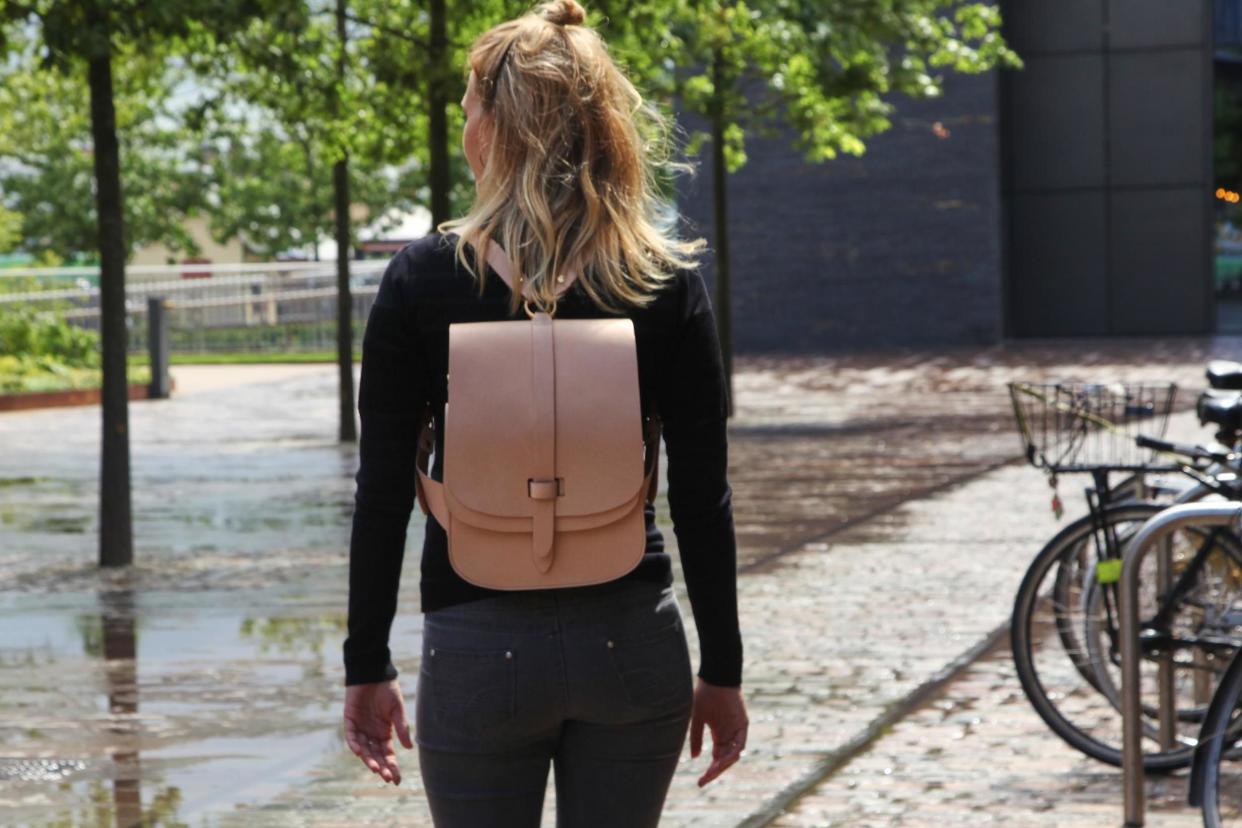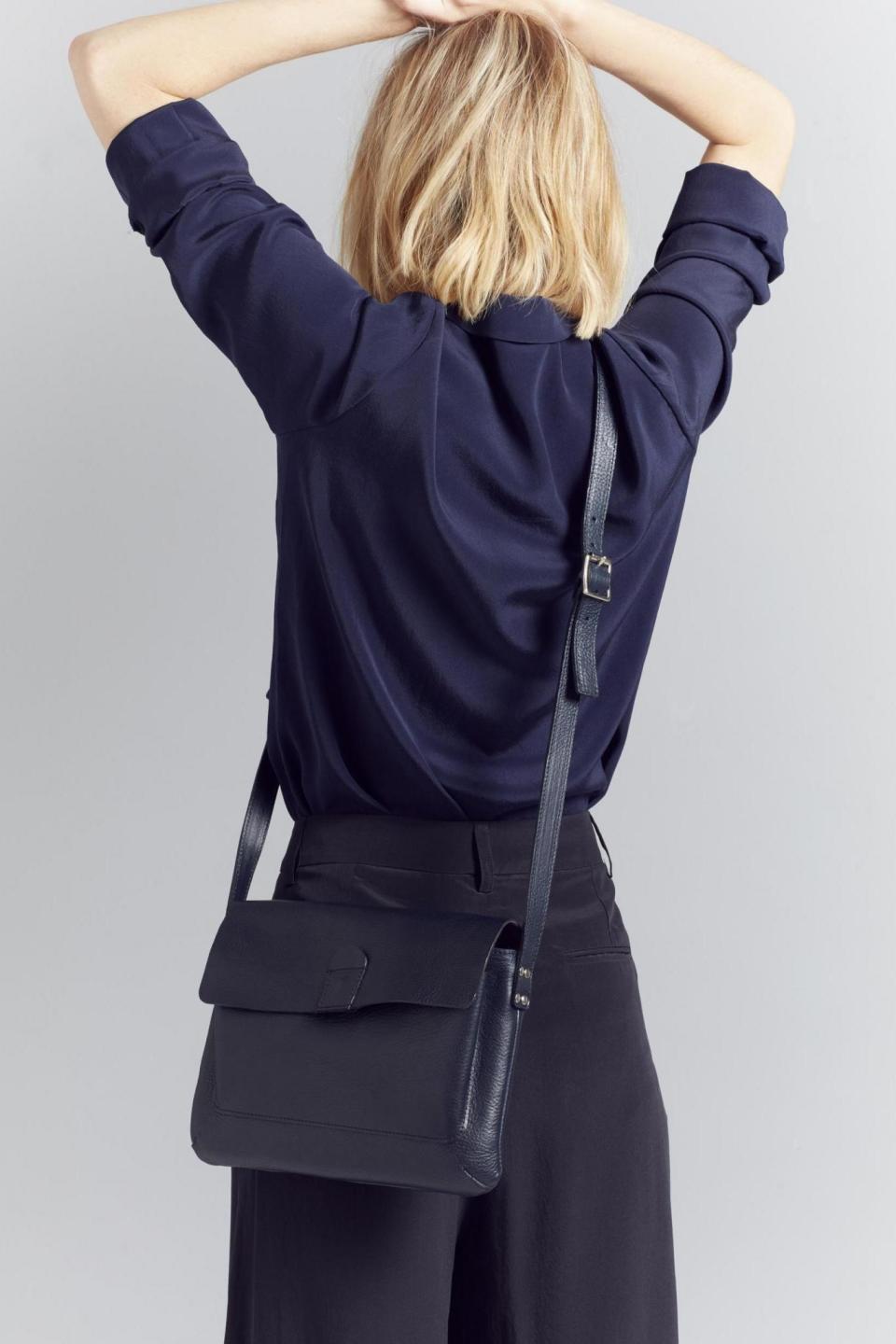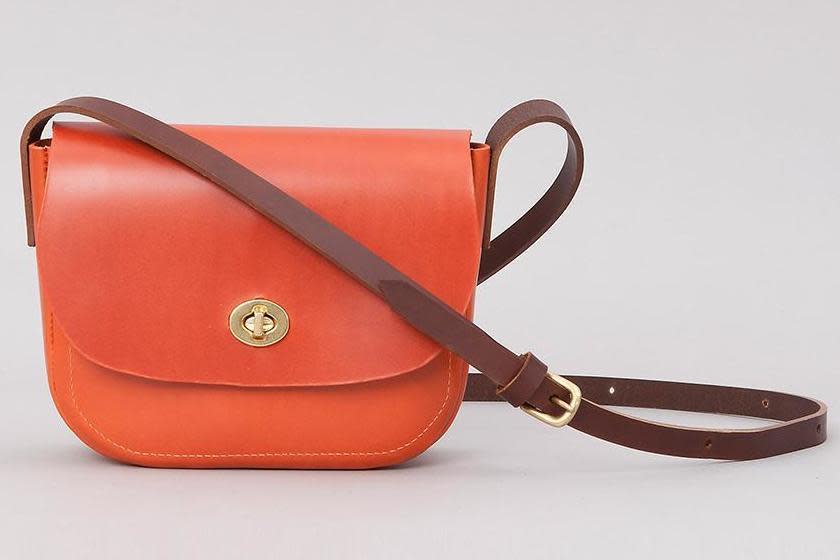The handmade's tale: best bags from local London designers

If you want to pocket yourself a piece of the capital’s finest craftsmanship, the smart option is to tote a satchel or rucksack from one of this fair city’s growing number of artisan bag designers.
With a focus on natural products such as vegetable-tanned leather and minimal silhouettes featuring subtle logos and hardly any hardware, these locally manufactured creations not only tick the box when it comes to lowering your carbon shopping footprint but are aesthetically on the money, too.
Leading the handmade pack is Lost Property of London, headed up by husband-and-wife team Katy Bell and John Maskell. The ex-Central Saint Martins students were inspired to start their Islington store and workshop because of a shared love of upcycling. “We use any surplus materials we find to help support our zero-waste ethos,” says Bell. “Our cotton linings are from end-of-line UK fabric manufacturers, and we source our leather from a select number of independent British leather merchants who buy in from tanneries in Italy and Belgium.”
The brand produces every single one of its bags in London. “I felt passionately about supporting and celebrating British manufacturing,” she continues. “More than ever the shoppers we meet and sell to are increasingly conscious of, and attracted by, the origin of the items they choose to buy. They like reassurance that their bag is made by hand in a traditional way by a family- run business.”

Nearby, M Hulot’s Anna Kreeger, who founded her brand after becoming disillusioned with the high street’s misleading British-made labelling, is based in Crouch End. “I had worked for some big high-street stores and suppliers and hated that you could label something Made in England if a component was added in this country, for example a buckle on a belt,” she says. “I wanted to make things where the provenance was transparent. I’d also worked with a UK factory and found there were lots of skills on offer and a big passion for product.”
Although it is more expensive to manufacture in London, Kreeger currently makes 65 per cent of her bags in the East End and is hoping to raise that figure to 80 per cent (the remaining 35 per cent are made in the Midlands and the Scottish borders). The savings she makes on not having to travel to factories abroad and on shipping costs, combined with gaining more control over the product during the manufacturing process, make it worthwhile.
Her customers appreciate it, too. “M Hulot customers tend to be natural-leather lovers,” she continues, referring to the vegetable-tanned leather the brand favours, “and a lot of our regular customers now tell me of the importance of knowing where the bag comes from and how it’s made.”
Another veg-tanned leather fan is Hackney’s Mimi Berry; the method is the most environmentally friendly way of treating leather and results in a beautiful natural quality as well as unique variations on the finish of each item. Berry, who began selling her wares in Spitalfields market, now splits manufacturing between London and the Midlands.

So will more brands start to produce in the capital? Katy Bell hopes so. “London-made is a rare thing. Price and speed is certainly something that foreign manufacturers use as a competitive edge. But working closely with a local manufacturer allows you to hone your design more freely and regularly down to the very fine detail, so you get a quality of craftsmanship you may not achieve further afield.”

 Yahoo News
Yahoo News 
